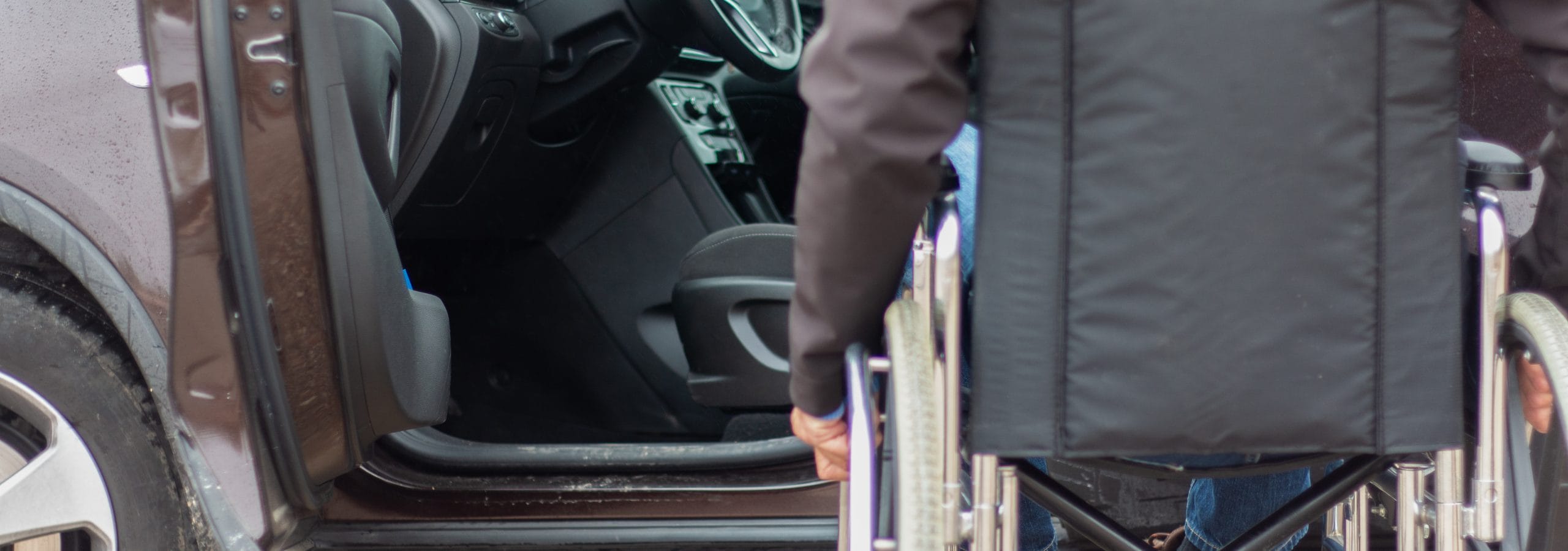How To Convert A Van For Wheelchair Accessibility
Owning a wheelchair-accessible van can be life-changing for individuals with mobility challenges. It opens up a world of possibilities, making daily activities easier and experience greater freedom and independence. Although standard vans provide some ease over other vehicles, converting a van into a wheelchair-accessible vehicle ensures it meets your unique needs. However, before jumping into a conversion, there are legal requirements to know, estimated costs to consider, and other information to note to ensure you receive the best results possible. Whether you’re a caregiver, family member, or individual seeking enhanced accessibility, the team at Southern Bus will help you understand how to convert a van to wheelchair accessible and meets your unique needs, selecting from a variety of mobility products for the ultimate customization.
Legalities to Consider Before Converting a Van
Before converting a van into a wheelchair-accessible vehicle, it’s crucial to familiarize yourself with the legalities involved. Adhering to local regulations and accessibility standards will ensure the safety and compliance of your converted van. From obtaining necessary permits to understanding the Americans with Disabilities Act (ADA) guidelines, wheelchair-accessible vehicle laws, and being aware of specific, regional requirements, addressing legal aspects upfront will ensure a smooth conversion process.
Requirements from the Americans with Disabilities Act (ADA)
Converting a van to be compliant with the Americans with Disabilities Act (ADA) is essential to provide protection and safe accommodations for those with disabilities. Laws surrounding transportation are the same at a national level in order to protect from discrimination, and ADA compliance is included in some vehicles as well as for many companies that specialize in selling ADA-compliant seats, vehicles, or other mobility products.
Knowing if you’re purchasing an ADA-compliant van will be indicated by a few specific features:
- Available space: The amount of space a vehicle offers is essential for ADA compliance. Vans in general offer a large amount of space, including several rows of seats, extra trunk space, and more. This will be essential for transporting mobility equipment and all passengers safely and comfortably.
- Wheelchair and Ramp Compatibility: It should go without saying — to be ADA compliant, the van needs to be wheelchair accessible. Modifications or conversions must occur to allow for easy side or rear entry. The van will also need to be compatible with ramps, but in most cases, if the vehicle offers wheelchair accessibility, it will be ramp compatible.
- Gear Shift Locks: In any transportation, safety is of the utmost importance. For ADA compliance, gear shift interlocks are a must as they ensure the vehicle cannot easily be shifted by accident when entering or exiting the van.
State and Local Law Regulations
Before converting a van into a wheelchair-accessible vehicle, it’s essential to be aware of your state and local regulations that govern such modifications that must be followed to ensure compliance. These regulations could cover such requirements as the minimum height of a van’s interior, width and accessibility of ramps, wheelchair securement systems, and more. Ensuring your van meets these necessary standards provides a safe, legally compliant transportation solution for those with mobility challenges. To better understand these laws, it’s best to work with an experienced dealership or auto shop as they will be knowledgeable in these legal requirements.
Insurance Considerations
In order for insurance companies to classify a vehicle as wheelchair-accessible, specific criteria have to be met. Converted vans must include features such as a lowered floor, wheelchair ramps or lifts, and wheelchair securement systems. These modifications enhance accessibility and meet necessary standards for insurance coverage.
Any vehicle owner needs to have insurance coverage and considering comprehensive coverage to adequately protect your investment is essential. Liability coverage will safeguard against accidents or injuries, collision coverage will cover damages to the vehicle in event of an accident, and comprehensive coverage for non-collision events will assist in cases of theft or vandalism. Looking into specialized coverage can help cover any costs associated with damage to adaptive equipment and modifications, as well as coverage for medical expenses or personal injury protection.
Be sure to discuss your insurance coverage options with a knowledgeable agent to ensure you get the right coverage that will provide comprehensive protection for your converted van.
Steps to Convert a Van for Wheelchair Accessibility
When you’re ready to make a van wheelchair accessible, it’s essential to understand the steps involved for the smoothest process possible that will provide the results you need. Below are the steps to take when making wheelchair van modifications:
- Choose the right van: Conversion can be a very involved process, removing various interior components, lowering the floor, or even raising the roof. Not every van may offer the possibility of conversion, so working with an experienced dealership can help verify whether it can or cannot if you find one you’re interested in.
- Consider installing wheelchair lifts or ramps: Consider whether or not your van will need a wheelchair lift or ramp. Does the van offer the capabilities and space to install these? At Southern Bus, we are experienced in installing scooter and wheelchair lifts, specifically joey lifts and curbsiders from trusted manufacturer, Bruno®.
- Consider installing wheelchair tie-downs and restraint systems: If the individual riding in the vehicle is going to be doing so in the wheelchair rather than a standard seat, you’ll need to consider installing wheelchair tie-downs and restraint or securement systems to ensure it’s the safest ride possible. Even with a wheelchair brake to keep from rolling, accidents, avoidance maneuvers, or specific driving habits could still create a dangerous situation if the wheelchair is not properly secured.
- Modify the interior for accommodations: When it comes to van and vehicle alterations for wheelchair users, the interior may require some modifications, from minor to extensive. It could be everything from removing seats to lowering the floor or lifting the roof.
- Undergo testing and certification: During or after the conversion process, undergoing testing and certification can ensure compliance with safety standards and regulations. This may involve inspections by certified professionals to verify the proper installation of accessibility features, securement systems, and any other modifications. Not only will these tests and inspections ensure passenger safety, but will also verify these modifications meet legal compliance and insurance requirements.
Cost of Converting a Van for Wheelchair Accessibility
Converting a standard van rather than purchasing one that has already been made wheelchair-accessible could come with costs to be aware of. In addition to the purchase price of the van, you may be responsible for paying another $10,000 to $20,000 for a basic conversion. If there are many modifications being made, or more complex modifications, you could be looking to pay an additional $60,000 to $100,000 on top of the purchase price.
Because these costs can be quite substantial, there are resources that can help make it more affordable. Veterans may be eligible for an automobile grant through the Veterans Auto and Education Improvement Act. Non-military individuals may also be eligible for cost assistance through disability benefits, so be sure to discuss these with your insurance provider.
Get a Safe, Comfortable Ride – Even in the Short-Term
Sometimes, you require a wheelchair-accessible van only for a brief time, whether due to an injury recovery or you’re driving a disabled individual around for a short time. You may also want to drive an accessible vehicle before buying to determine what modifications will be the most useful for your needs. In all of those situations, purchasing a vehicle may not make financial sense. Instead, opt for wheelchair vehicle rental so you can get the benefits of a safe, comfortable ride without making a large, financial investment.
Be Sure Your Van Conversion is Performed Right with Southern Bus
When you need a wheelchair-accessible van that is comfortable, accessible and meets your needs, you need to ensure it’s done correctly and is compliant with all ADA, legal, and insurance requirements. Working with a standard automobile dealership may not provide you with the best information on a van conversion, so be sure to work with a dealership that is knowledgeable, experienced, and NMEDA QAP Certified like Southern Bus.
Ready to get started? Contact a wheelchair vehicle provider at Southern Bus, or visit one of our area locations today.

